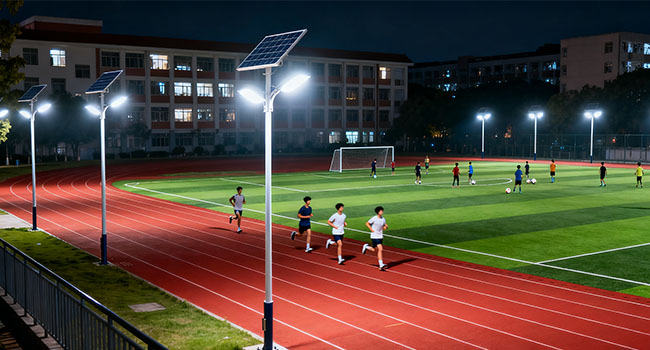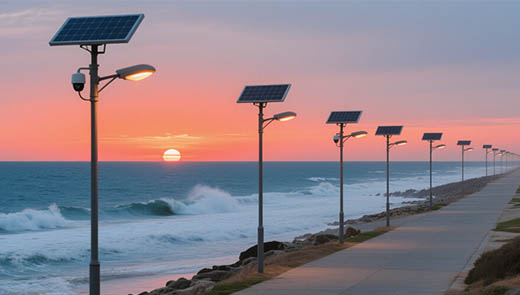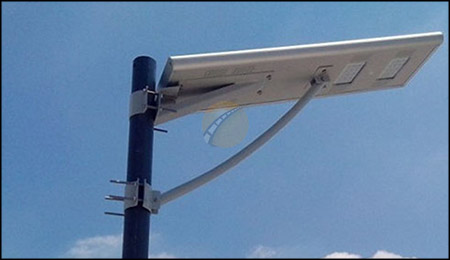How to Save Money in 5 Ways by Choosing Solar Street Lights
Amid accelerating urbanization and deepening “dual carbon” strategies, street lights—as fundamental public infrastructure—have seen their long-term operational costs become a core concern for government departments, park management entities, and rural development stakeholders. Traditional grid-connected street lights rely on municipal power grids, resulting in high energy consumption alongside ongoing electricity costs, complex installation fees, and frequent maintenance expenses. Solar street lights, however, offer a superior solution for reducing infrastructure costs through their characteristics of “clean energy-powered, independent operation, and low maintenance requirements.” This article will detail the financial savings advantages of solar street lights across five core dimensions: electricity costs, installation, maintenance, subsidies, and replacement.

Electricity Cost Savings of Solar Street Lights
Electricity expenses for traditional grid-connected street lights represent a long-term, fixed cost item. Especially in scenarios with numerous lights and extended illumination periods, cumulative electricity bills can be substantial. Solar street lights, however, convert solar energy into electricity via photovoltaic panels, completely eliminating grid dependence and thereby removing electricity costs at the source.
Characteristics of Traditional Grid-Connected Electricity Costs
Consider a municipal road equipped with multiple conventional street lights. Based on standard power ratings and daily operating hours, ongoing electricity payments are required over the long term. As the system ages, total electricity expenditures accumulate, becoming a substantial recurring expense.
Advantages of Solar Street Light Electricity Costs
Solar street lights operate by storing energy via photovoltaic panels during daylight hours and illuminating with LED lights at night, eliminating the need for municipal grid connection. Even during cloudy or rainy weather, high-quality solar street lights paired with large-capacity lithium batteries can ensure continuous illumination for several days, fully meeting daily usage requirements. Their annual electricity cost is zero. Compared to traditional street lights, the longer the usage period, the more significant the electricity cost savings become, completely avoiding long-term accumulated electricity expenses.
Solar Street Light Installation Cost Savings
Traditional grid-connected street lights involve complex processes like grid connection, cable excavation, and conduit installation. This not only extends construction timelines but may also incur hidden costs such as road restoration and landscaping compensation. Solar street lights, however, feature standalone installation requiring no cable laying, significantly reducing installation complexity and expenses.
Installation Cost Comparison Between Traditional and Solar Street Lights
From a core construction perspective, traditional grid-connected street lights require multiple complex processes including grid connection, cable trenching, conduit installation, and luminaire mounting. Solar street lights, however, only require pouring a concrete foundation and assembling/securing the luminaire, greatly simplifying the process. Regarding labor requirements, traditional grid-connected street lights necessitate collaboration from a team of professional electricians (typically multiple personnel), while solar street lights can be installed by a small number of general installers, resulting in lower labor costs.
Regarding hidden costs, traditional grid-connected street lights incur additional expenses like road repair fees per kilometer installed, whereas solar street lights have no such hidden costs. Overall, the total installation cost for multiple street lights is higher for traditional grid-connected systems, while solar street lights are significantly cheaper. Additionally, the construction cycle for solar street lights is markedly shorter than for traditional ones, ultimately achieving cost savings of over 60% in the final installation phase.
Solar street light Maintenance Costs
Conventional grid-connected street lights, with their numerous components and complex circuits, are prone to malfunctions, requiring frequent part replacements and repairs. Solar street lights feature long-lasting core components and a simple structure, resulting in much lower maintenance frequency and costs compared to traditional street lights.

Maintenance Cost Comparison Between Traditional Street Lights and Solar street lights
In terms of vulnerable components, traditional grid-connected street lights contain multiple susceptible parts such as ballasts, starters, cables, and bulbs, resulting in a high failure rate. Solar street lights, however, lack core vulnerable components, significantly reducing the risk of malfunction. Regarding annual maintenance frequency, traditional grid-connected street lights require multiple repairs, while solar street lights need only minimal maintenance—primarily cleaning of photovoltaic panels, which does not require specialized operations. Regarding single-repair costs, traditional grid-connected street lights incur expenses for replacement parts and labor with each maintenance session. Solar street light panel cleaning can be performed independently, incurring no additional costs.
Considering the proportion of annual maintenance costs relative to initial investment, traditional grid-connected street lights incur costs accounting for 8%-10% of the initial investment—a relatively high ratio. In contrast, solar street lights incur annual maintenance costs below 1% of the initial investment, representing an extremely low proportion. For projects with fixed initial investments, long-term maintenance costs are significantly higher for traditional grid-connected street lights while remaining extremely low for solar street lights.
Solar Street Light Policy Subsidies
To promote clean energy adoption, national and local governments offer multiple subsidy policies for solar street light projects. Traditional grid-connected lights, due to their high energy consumption, are ineligible for such incentives. Solar street lights can directly reduce initial investment pressure through these subsidies.
Common Subsidy Types for Solar Street Lights
In rural settings, solar street light projects typically qualify for subsidies covering 30%-50% of initial costs. Some regions further increase subsidy levels under the Rural Revitalization Strategy. For solar street light projects in industrial parks, subsidies generally cover up to 20% of project costs. These can be combined with green building subsidies and energy-saving/emission-reduction subsidies to further expand benefits. Projects in impoverished areas or ecological conservation zones receive more substantial subsidies, potentially reaching 30%-60% when combined with ecological protection, poverty alleviation, and other subsidies.
Impact of Subsidies on Initial Investment
Taking a solar street light project with fixed initial investment as an example: With standard subsidies, actual investment costs are significantly reduced.Eligibility for higher subsidies can substantially lower actual investment.Additionally, some regions offer complementary support such as interest-subsidized loans and tax breaks, further easing cash flow pressures and reducing initial investment burdens.

Cost Savings from Solar Street Light Replacement
Traditional grid-connected street lights have short lifespans, requiring full replacements upon expiration and incurring high recurring investment costs. Solar street lights feature long-lasting core components, requiring only the replacement of consumable lithium batteries, which substantially lowers replacement costs.
Comparison of Lifespan and Replacement Costs Between Traditional and Solar Street Lights
In terms of average lifespan, traditional grid-connected street lights have a relatively short lifespan, typically 8-10 years. The core components of solar street lights (such as photovoltaic panels) can last over 25 years, offering superior overall durability. Regarding replacement scope upon expiration: Traditional grid-connected lights require complete replacement—including poles, cables, fixtures, and all components—while solar lights only need lithium battery replacement. Other core components remain functional, with batteries lasting approximately 8-10 years.
Regarding single-replacement costs, the cost of replacing multiple traditional grid-connected lights is comparable to the initial investment, making it relatively high. In contrast, the single-replacement cost for multiple solar lights is only the expense of the lithium battery, significantly lower. Considering the number of replacements over a long-term cycle, traditional grid-connected lights require multiple replacements during prolonged use, leading to frequent reinvestment. Solar lights, however, require only a minimal number of replacements, resulting in fewer reinvestments and a clear long-term cost advantage.
Solar street lights establish a comprehensive cost-saving system across five dimensions—electricity costs, installation, maintenance, subsidies, and replacement—aligning with the “dual carbon” strategy while effectively alleviating long-term operational funding pressures. Whether for municipal roads, industrial parks, or rural development, adopting solar street lights represents a win-win approach that reduces costs, enhances efficiency, and promotes green development, providing robust support for the sustainable advancement of infrastructure construction.




